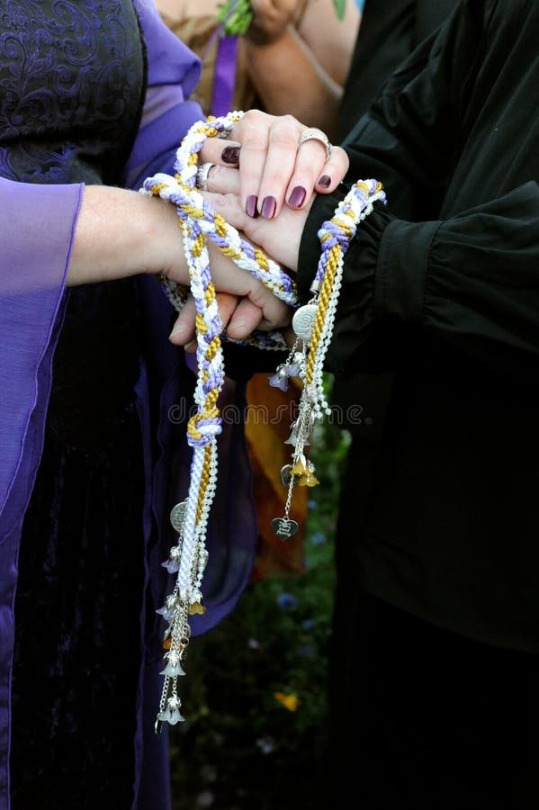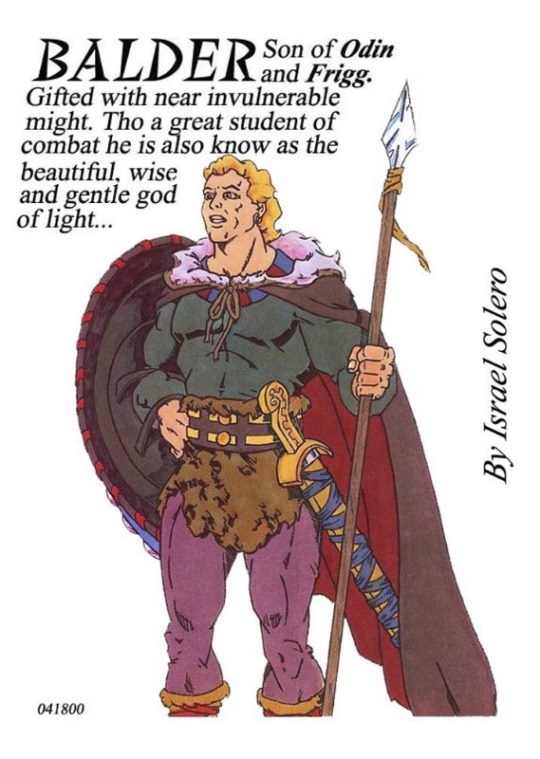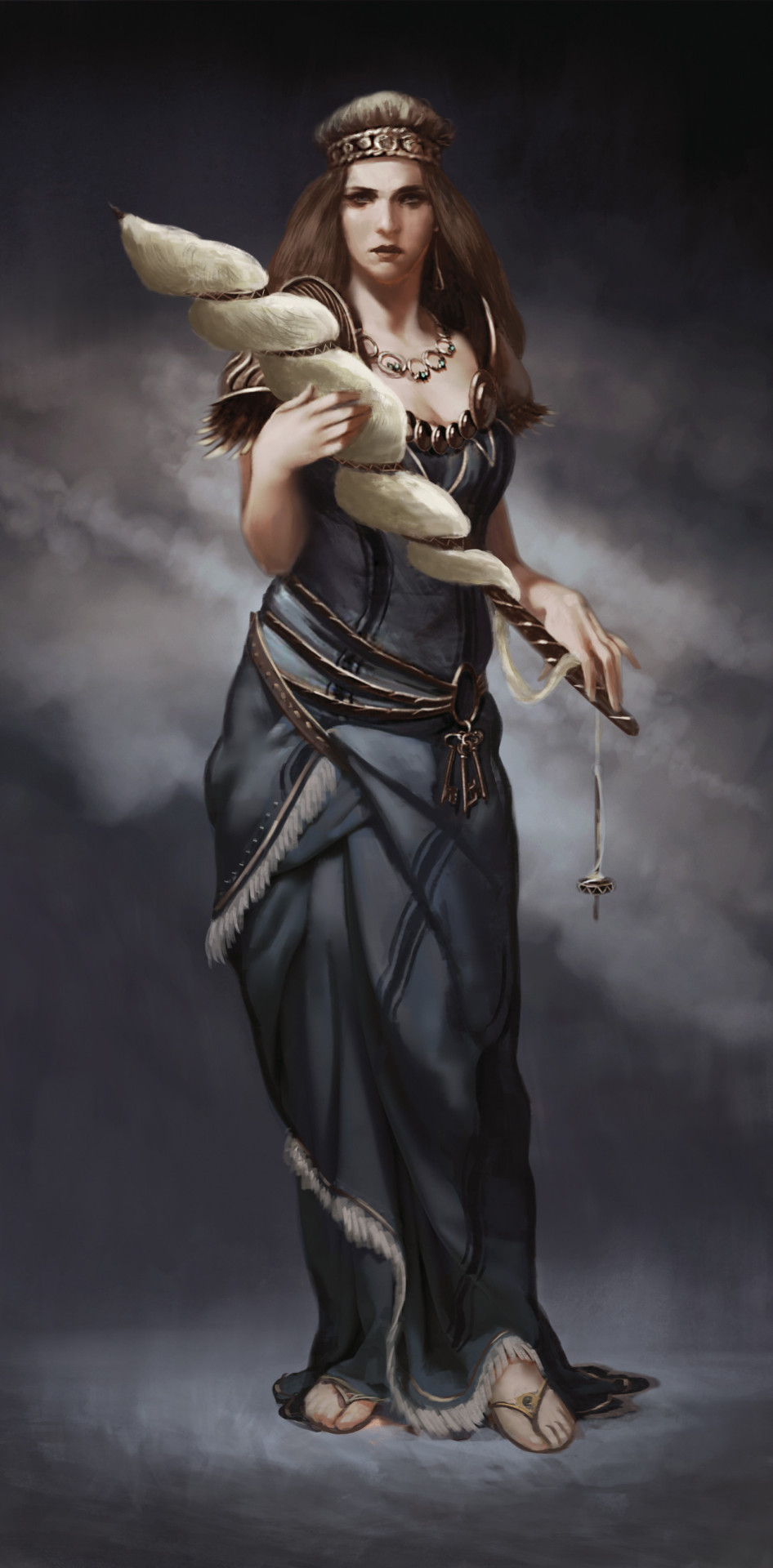Don't wanna be here? Send us removal request.
Text
MIDWINTER NIGHT'S EVE: Y U L E
by Mike Nichols

Our Christian friends are often quite surprised at how enthusiastically we Pagans celebrate the 'Christmas' season. Even though we prefer to use the word 'Yule', and our celebrations may peak a few days BEFORE the 25th, we nonetheless follow many of the traditional customs of the season: decorated trees, carolling, presents, Yule logs, and mistletoe. We might even go so far as putting up a 'Nativity set', though for us the three central characters are likely to be interpreted as Mother Nature, Father Time, and the Baby Sun-God. None of this will come as a surprise to anyone who knows the true history of the holiday, of course.
In fact, if truth be known,the holiday of Christmas has always been more Pagan than Christian, with it's associations of Nordic divination, Celtic fertility rites, and Roman Mithraism. That is why both Martin Luther and John Calvin abhorred it, why the Puritans refused to acknowledge it, much less celebrate it (to them, no day of the year could be more holy than the Sabbath), and why it was even made ILLEGAL in Boston! The holiday was already too closely associated with the birth of older Pagan gods and heroes. And many of them (like Oedipus, Theseus, Hercules, Perseus, Jason, Dionysus, Apollo, Mithra, Horus and even Arthur) possessed a narrative of birth, death, and resurrection that was uncomfortably close to that of Jesus. And to make matters worse, many of them pre-dated the Christian Savior.
Ultimately,of course, the holiday isrooted deeply in the cycle of the year. It is the Winter Solstice that is being celebrated, seed-time of the year, the longest night and shortest day. It is the birthday of the new Sun King, the Son of God -- by whatever name you choose to call him. On this darkest of nights, the Goddess becomes the Great Mother and once again gives birth. And it makes perfect poetic sense that on the longest night of the winter, 'the dark night of our souls', there springs the new spark of hope, the Sacred Fire, the Light of the World, the Coel Coeth.
That is why Pagans have as much right to claim this holiday as Christians. Perhaps even more so, as the Christians were rather late in laying claim to it, and tried more than once to reject it. There had been a tradition in the West that Mary bore the child Jesus on the twenty-fifth day, but no one could seem to decide on the month. Finally, in 320 C.E., the Catholic Fathers in Rome decided to make it December, in an effort to co-opt the Mithraic celebration of the Romans and the Yule celebrations of the Celts and Saxons.
There wasnever much pretensethat the datethey finally chosewas historically accurate. Shepherds just don't 'tend their flocks by night' in the high pastures in the dead of winter! But if one wishes to use the New Testament as historical evidence, this reference may point to sometime in the spring as the time of Jesus's birth. This is because the lambing season occurs in the spring and that is the only time when shepherds are likely to 'watch their flocks by night' -- to make sure the lambing goes well. Knowing this, the Eastern half of the Church continued to reject December 25, preferring a 'movable date' fixed by their astrologers according to the moon.
Thus, despite itsshaky start (for over three centuries, no one knew when Jesus was supposed to have been born!), December 25 finally began to catch on. By 529, it was a civic holiday, and all work or public business (except that of cooks, bakers, or any that contributed to the delight of the holiday) was prohibited by the Emperor Justinian. In 563, the Council of Braga forbade fasting on Christmas Day, and four years later the Council of Tours proclaimed the twelve days from December 25 to Epiphany as a sacred, festive season. This last point is perhaps the hardest to impress upon the modern reader, who is lucky to get a single day off work. Christmas, in the Middle Ages, was not a SINGLE day, but rather a period of TWELVE days, from December 25 to January 6. The Twelve Days of Christmas, in fact. It is certainly lamentable that the modern world has abandoned this approach, along with the popular Twelfth Night celebrations.
Of course, the Christian version of the holiday spread to many countries no faster than Christianity itself, which means that 'Christmas' wasn't celebrated in Ireland until the late fifth century; in England, Switzerland, and Austria until the seventh; in Germany until the eighth; and in the Slavic lands until the ninth and tenth. Not that these countries lacked their own mid-winter celebrations of Yuletide. Long before the world had heard of Jesus, Pagans had been observing the season by bringing in the Yule log, wishing on it, and lighting it from the remains of last year's log. Riddles were posed and answered, magic and rituals were practiced, wild boars were sacrificed and consumed along with large quantities of liquor, corn dollies were carried from house to house while carolling, fertility rites were practiced (girls standing under a sprig of mistletoe were subject to a bit more than a kiss), and divinations were cast for the coming Spring. Many of these Pagan customs, in an appropriately watered-down form, have entered the mainstream of Christian celebration, though most celebrants do not realize (or do not mention it, if they do) their origins. For modern Witches, Yule (from the Anglo-Saxon 'Yula', meaning 'wheel' of the year) is usually celebrated on the actual Winter Solstice, which may vary by a few days, though it usually occurs on or around December 21st. It is a Lesser Sabbat or Lower Holiday in the modern Pagan calendar, one of the four quarter-days of the year, but a very important one. This year (1988) it occurs on December 21st at 9:28 am CST. Pagan customs are still enthusiastically followed. Once, the Yule log had been the center of the celebration. It was lighted on the eve of the solstice (it should light on the first try) and must be kept burning for twelve hours, for good luck. It should be made of ash. Later, the Yule log was replaced by the Yule tree but, instead of burning it, burning candles were placed on it. In Christianity, Protestants might claim that Martin Luther invented the custom, and Catholics might grant St. Boniface the honor, but the custom can demonstrably be traced back through the Roman Saturnalia all the way to ancient Egypt. Needless to say, such a tree should be cut down rather than purchased, and should be disposed of by burning, the proper way to dispatch any sacred object.
Along with the evergreen, the holly and the ivy and the mistletoe were important plants of the season, all symbolizing fertility and everlasting life. Mistletoe was especially venerated by the Celtic Druids, who cut it with a golden sickle on the sixth night of the moon, and believed it to be an aphrodisiac. (Magically -- not medicinally! It's highly toxic!) But aphrodisiacs must have been the smallest part of the Yuletide menu in ancient times, as contemporary reports indicate that the tables fairly creaked under the strain of every type of good food. And drink! The most popular of which was the 'wassail cup' deriving its name from the Anglo-Saxon term 'waes hael' (be whole or hale).
Medieval Christmasfolklore seems endless: that animalswill all kneel down as the Holy Night arrives, that bees hum the '100th psalm' on Christmas Eve, that a windy Christmas will bring good luck, that a person born on Christmas Day can see the Little People, that a cricket on the hearth brings good luck, that if one opens all the doors of the house at midnight all the evil spirits will depart, that you will have one lucky month for each Christmas pudding you sample, that the tree must be taken down by Twelfth Night or bad luck is sure to follow, that 'if Christmas on a Sunday be, a windy winter we shall see', that 'hours of sun on Christmas Day, so many frosts in the month of May', that one can use the Twelve Days of Christmas to predict the weather for each of the twelve months of the coming year, and so on.
Remembering that most Christmas customs are ultimately based upon older Pagan customs, it only remains for modern Pagans to reclaim their lost traditions. In doing so, we can share many common customs with our Christian friends, albeit with a slightly different interpretation. And thus we all share in the beauty of this most magical of seasons, when the Mother Goddess once again gives birth to the baby Sun-God and sets the wheel in motion again. To conclude with a long-overdue paraphrase, 'Goddess bless us, every one!'
0 notes
Text
HANDFASTING (WEDDING)
Ryan Hunter [The following wedding ceremony was written to provide for Pagans who must of necessity be wed in the presence of the uninitiated who are not pagan and are perhaps unaware that the bride and groom are pagan. Replace the words Bride and Groom below with the names of the happy couple. This ceremony was used by both my wife and myself and by my sister and her husband. They modified the text at the point below where it says "loving each other wholly and completely" to add the phrase "forsaking all others" as they are into monogamy. Either version works beautifully, I recommend the participants rewrite where necessary to form a legal contract that they can and will keep. It is easy to avoid being an oathbreaker if you only swear to that you will keep and avoid swearing to something just because the other party wants it or because it might be "expected" by the family. Notice: parts of this ritual were cribbed from the writings of others. I apologize in advance for failure to reference sources but after the fifteenth rewrite we had forgotten where we got the text and what was and what was not original to us. I doubt if there are quotes from other sources longer than paragraph length and thus should not be a copyright problem. If you see something that is yours, please send me mail and I will reference you in the future. Our thanks to those who paved the way. --Ryan Hunter]
[PRIEST] We have come together here in celebration of the joining together of bride__ and groom__. There are many things to say about marriage. Much wisdom concerning the joining together of two souls,has come our way through all paths of belief, and from many cultures. With each union, more knowledge is gained and more wisdom gathered. Though we are unable to give all this knowledge to these two, who stand before us, we can hope to leave with them the knowledge of love and its strengths and the anticipation of the wisdom that comes with time. The law of life is love unto all beings. Without love, life is nothing, without love, death has no redemption. Love is anterior to Life, posterior to Death, initial of Creation and the exponent of Earth. If we learn no more in life, let it be this.
Marriage is a bond to be entered into only after considerable thought and reflection. As with any aspect of life, it has its cycles, its ups and its downs, its trials and its triumphs. With full understanding of this, Groom and Bride have come here today to be joined as one in marriage.
Others would ask, at this time, who gives the bride in marriage, but, as a woman is not property to be bought and sold, given and taken, I ask simply if she comes of her own will and if she has her family's blessing.
Bride, is it true that you come of your own free will and accord?
[BRIDE] Yes, it is true.
[PRIEST] With whom do you come and whose blessings accompany you.
[FATHER] She comes with me, her father, and is accompanied by all of her family's blessings.
[PRIEST] Please join hands with your betrothed and listen to that which I am about to say.
Above you are the stars, below you are the stones, as time doth pass, remember…
Like a stone should your love be firm like a star should your love be constant. Let the powers of the mind and of the intellect guide you in your marriage, let the strength of your wills bind you together, let the power of love and desire make you happy, and the strength of your dedication make you inseparable. Be close, but not too close. Possess one another, yet be understanding. Have patience with one another, for storms will come, but they will pass quickly.
Be free in giving affection and warmth. Have no fear and let not the ways of the unenlightened give you unease, for God is with you always.
Groom, I have not the right to bind thee to Bride, only you have this right. If it be your wish, say so at this time and place your ring in her hand.
[GROOM] It is my wish.
[PRIEST] Bride, if it be your wish for Groom to be bound to you, place the ring on his finger. (places ring on Groom's left ring finger)
Bride I have not the right to bind thee to Groom only you have this right. If it be your wish, say so at this time and place your ring in his hand. [BRIDE] It is my wish. [PRIEST] Groom, if it be your wish for Bride to be bound to you, place the ring on her finger.(places ring on Bride's left ring finger)
(to Groom) Repeat after me:
I, (grooms full name), in the name of the spirit of God that resides within us all, by the life that courses within my blood and the love that resides within my heart, take thee (bride's full name) to my hand, my heart, and my spirit, to be my chosen one. To desire thee and be desired by thee, to possess thee, and be possessed by thee, without sin or shame, for naught can exist in the purity of my love for thee. I promise to love thee wholly and completely without restraint, in sickness and in health, in plenty and in poverty, in life and beyond, where we shall meet, remember, and love again. I shall not seek to change thee in any way. I shall respect thee, thy beliefs, thy people, and thy ways as I respect myself.
(to Bride) I (bride's full name), in the name of the spirit of God that resides within us all, by the life that courses within my blood, and the love that resides within my heart, take thee, (Groom's full name) to my hand, my heart, and my spirit to be my chosen one. To desire and be desired by thee, to possess thee, and be possessed by thee, without sin or shame, for naught can exist in the purity of my love for thee. I promise to love thee wholly and completely without restraint, in sickness and in health, in plenty and in poverty, in life and beyond, where we shall meet, remember, and love again. I shall not seek to change thee in any way. I shall respect thee, thy beliefs, thy people, and thy ways as I respect myself.
[PRIEST] (hands chalice to the groom, saying:) May you drink your fill from the cup of love.
(Groom holds chalice to bride while she sips then bride takes chalice and holds it to groom while he sips. The chalice is then handed back to the Priest who sets it on the table. Next the Priest takes the plate of bread, giving it to the groom. Same procedure repeated with bread, groom feeding bride and bride feeding groom.)
By the power vested in me by God and the State of Alabama, I now pronounce you husband and wife. May your love so endure that its flame remains a guiding light unto you.

2 notes
·
View notes
Text
CIRCLES, WHY USE THEM?
MEL WHITE They say that the longest journey begins with a single step. So, too, the exploration of Magickal studies begins with a single step. Though the first step in a physical journey is often self-evident, the First Step on a Magickal journey is often not quite so clear. While formally organized groups often have a path of lessons to instruct newcomers, the solitary or isolated student is often left standing in perplexity on this broad plain of knowledge, wondering just where in the heck to begin. And wondering, too, if it's "okay" to start just anywhere.
While it's true that studies can begin in any direction that attracts you, the necessary first step must be learning to make psychic shields. There are "Things of the Dark" out there. There are any number of explanations for what these things might be-- ghosts, demons, or simply uncontrolled urges of the subconscious mind. In truth, it doesn't matter what they are. What does matter is that their effect is very real and unless they are put under your control, they will drag you over the borders of sanity into psychosis. You are most vulnerable to them while you're in an "open" trance or meditative state. That's why the wise practitioner always begins by taking steps to define exactly what will be permitted through the portals of their "psychic shields"-- no matter how simple the ritual. And this, in a nutshell, is what "protective magic" is about.
There are a number of ways to do this. The most common is to begin by drawing a circle (around a group or yourself) and invoking the one or more protective powers. Generally, this is done by candlelight, in front of an altar that holds certain magical objects. The circle may be further "secured" and "cleared" by using salt, salt water, rum, incense, or some other method. You may be wearing a special robe and will have taken a bath ( or performed a cleansing ritual) earlier. The powers that protect you will be called on and THEN you will begin your ritual.
Is it psychological? Absolutely! Is there a reason why protection rituals always take this form? Positively! Let's take a step back and see what you're actually doing and how the process works-- from a psychological standpoint-- and how to use this knowledge to help you refine your circles to enhance your rituals.
Psychologists and psychics alike view the mind's structure as a three-part entity: The ego (that which you think of as yourself), the superego (the "higher self") and the Id (the child within). The Id is, in a sense, a computer. Like most computers, it operates on the "garbage in-garbage out" principle. There's an old superstition "as you name something, so will it become." Tell yourself that you're very unlucky and your id will obligingly give you bad days by enhancing any negatives in your environment. Tell yourself that you are clumsy, and your id-computer will obligingly arrange for you to break a leg while stepping off the sidewalk. The bad news is that the Id can't make a judgement as to whether or not this is a good idea. It only knows that it's received these "instructions" and must carry them out. The good news is that you can actually program/reprogram this portion of your mind.
You begin programming this Internal Servant of yours by first drawing its attention to what you want done and then explaining what you need done in a simple and clear manner. Repeating the instructions in a chant help fix the goals for the Id-- rhymed chants seem to be easier for it to process. Each time you perform the ritual and repeat the chant, the programming is strengthened. Never mind that your ego and superego understand that you're going to program the child-like Id. It works just the same.
To direct the Id's attention to the process, you first have to impress it. Using special tools and clothing alert it that something unusual is going on and that it must pay attention. Acquiring hard-to-obtain items, drawing symbols, performing a symbolic sacrifice (donating money, say, to a good cause) are all ways of reinforcing the Id's impression that this ceremony is very special and that the result will be very powerful. Organized, meaningful symbols, speak to your subconscious mind in ways it understands, reinforcing the goals you have set.
Drawing the circle itself establishes boundaries within your environment ("The rest of the world can do what it likes Out There. All within this circle is in MY control!"). Purifying the circle and consecrating it (sprinkling water which has been blessed and salt added) further enforce your territory, defining the borders where you are "safe". Nothing can enter this area except what you invite inside. You further tighten these borders by calling on certain Powers.
You can call on any powers you like. Some use traditional Christian images. Others call up deities from the religion they are most comfortable with. And many people use the thought/image of a beam of light that represents either God/Goddess (whichever one they like) OR the power of light and life and goodness in the Universe. The number of powers called as guardians varies. You may choose to invoke one powerful being to protect your circle. Or you might call on the Universal Being/Light AND four guardians (one for each quarter of the compass). A third approach is to use a guardian for the four quarters of the compass and no higher being. There is no "absolutely correct" system; the correct system is the one that YOU are comfortable with.
Take time to choose the guardians of your circle carefully. You should select guardians (gods or animals or some form of life) which have a deeper meaning to you and whose qualities are in harmony with your goals. For the new student, it's best to have all your Powers and Guardians from the same belief system/religion/mythic universe so that the symbols will be consistent and not confuse the Id.
You CAN use people-- saints, movie actors, figures from favorite books as guardians. DO, however, pick someone who's dead or non-existent. The dead can't argue with your interpretation of them, whereas the living may be highly offended to be approached as gods/ guardians).
As your studies continue, you will find that your totems or guardians change. This is to be expected; as you explore new realms in your studies, you may find you need guardians who deal with very specific areas to strengthen and guide you in these new fields.
But don't make the mistake of assuming that you'll become so powerful that you will never need the protection of the psychic shielding circle in some form. And don't assume that you will not need a circle for "positive" magicks such as healing. Open is open-- and open is vulnerable. And circles strengthen and protect you by defining what psychological influences will be allowed to work with you.
0 notes
Text
INVOCATION TO FREYJA
"Freyja, Of the many names, Join us. Freyja, Of the golden tears, Join us. Freyja, Daughter of Njord, Join us. Freyja, Wife of Od, Join us. Freyja, Sister of Freyr, Join us. Freyja, Mother of Hnoss, Join us. Freyja, Claimed by Thrym, Join us. Freyja, Driver of cats, Join us. Freyja, Goddess of Fertility, Join us. Freyja, Who shares the slain with Odin, Join us. Freyja, Who taught the Aesir Magick, Join us. Freyja, Lender of Falcons' Flight, Join us. Freyja, Mistress of Brisingamen, Join us. Freyja, Mistress of Folkvang, Join us. Freyja, Mistress of nature, Join us. Freyja, Your servant _ calls you! Come to me NOW!"

8 notes
·
View notes
Text
INVOCATION TO BALDUR
"Baldr, Son of Frigg, Join us. Baldr, Son of Odin, Join us. Baldr, Husband of Nanna, Join us. Baldr, Brother of Hodr, Join us. Baldr, Brother of Hermod, Join us. Baldr, Father of Forsetti, Join us. Baldr, Slain by blind Hodr, Join us. Baldr, Master of Breidablik, Join us. Baldr, Who is much loved, Join us. Baldr, Who Thokk alone would not mourn, Join us. Baldr, The Fairest of the Aesir, Join us. Baldr, Whose Judgments stand unaltered, Join us. Baldr, Whose Judgments stand unheeded, Join us. Baldr, The Wisest of the Aesir, Join us. Baldr, The Shining One, Join us. Baldr, Your servant _ calls you! Come to me NOW!"

3 notes
·
View notes
Text
all my advice about using real athletes to learn drawing bodies beyond hard abs, and my particular pref being wrestlers, also applies to women btw. you can draw women who r strong and not an hourglass shape. fucking do it.




kris statlander, rhea ripley (look at her SHAPE), willow nightingale, ruby soho, these r just four off the top of my head that have obvious musculature and different body types. skye blue and julia hart have more slim cheerleader style bodies as well, i REALLY wanted to put emi sakura who is fucking STOUT (adoring) in this post but i couldn't find a good demonstrative pic, the list goes on
DRAW DIFFERENT BODIESSSSSSSS
98K notes
·
View notes
Text
INVOCATION TO FRIGG
Russ Anderson When this invocation was first used, each person in a healing circle invoked a healer into (her/him)self. This was my invocation. The rest of the circle was asked to echo "Join us, Frigg" as I was saying "Join us. Frigg,". This was my first attempt at writing an invocation, and it DID work. I hope that it also works for anyone else who wishes to use it, because it now feels like time to share it. Blessed Be.
"Frigg, Daughter of Jord, Join us. Frigg, Daughter of Fiorgyn, Join us. Frigg, Wife of Odin, Join us. Frigg, Sister of Thorr, Join us. Frigg, Mother of Balder, Join us. Frigg, Mother of Hodr, Join us. Frigg, Mother of Hermod, Join us. Frigg, Mother of the gods, Join us. Frigg, Wise in all fates, Join us. Frigg, Who will tell no fortunes, Join us. Frigg, First among the Asynjur, Join us. Frigg, Queen of Asgard, Join us. Frigg, Mistress of home and hearth, Join us. Frigg, Mistress of Eire, Join us. Frigg, Mistress of healing, Join us. Frigg, Your servant _ calls you! Come to me NOW!"

0 notes
Text
A MIDSUMMER CELEBRATION
by Mike Nichols (a.k.a. Gwydion)
In additionto the four greatfestivals of the PaganCeltic year, there are four lesser holidays as well: the two solstices, and the two equinoxes. In folklore, these are referred to as the four 'quarter-days' of the year, and modern Witches call them the four 'Lesser Sabbats', or the four 'Low Holidays'. The Summer Solstice is one of them.
Technically,a solstice is an astronomicalpoint and, due to the precession to the equinox, the date may vary by a few days depending on the year. The summer solstice occurs when the sun reaches the Tropic of Cancer, and we experience the longest day and the shortest night of the year. Astrologers know this as the date on which the sun enters the sign of Cancer. This year it will occur at 10:57 pm CDT on June 21st.
However, since most European peasants were not accomplished at reading an ephemeris or did not live close enough to Salisbury Plain to trot over to Stonehenge and sight down it's main avenue, they celebrated the event on a fixed calendar date, June 24th. The slight forward displacement of the traditional date is the result of multitudinous calendrical changes down through the ages. It is analogous to the winter solstice celebration, which is astronomically on or about December 21st, but is celebrated on the traditional date of December 25th, Yule, later adopted by the Christians.
Again, it mustbe remembered that the Celts reckoned their days from sundown to sundown, so the June 24th festivities actually begin on the previous sundown (our June 23rd). This was Shakespeare's Midsummer Night's Eve. Which brings up another point: our modern calendars are quite misguided in suggesting that 'summer begins' on the solstice. According to the old folk calendar, summer BEGINS on May Day and ends on Lammas (August 1st), with the summer solstice, midway between the two, marking MID-summer. This makes more logical sense than suggesting that summer begins on the day when the sun's power begins to wane and the days grow shorter.
45
Although our Pagan ancestors probably preferred June 24th (and indeed most European folk festivals today use this date), the sensibility of modern Witches seems to prefer the actual solstice point, beginning the celebration at sunset. Again, it gives modern Pagans a range of dates to choose from with, hopefully, a weekend embedded in it. (And this year, the moon is waxing throughout.)
As the Pagan mid-winter celebration of Yule was adopted by Christians as Christmas (December 25th), so too the Pagan mid-summer celebration was adopted by them as the feast of John the Baptist (June 24th). Occurring 180 degrees apart on the wheel of the year, the mid-winter celebration commemorates the birth of Jesus, while the mid-summer celebration commemorates the birth of John, the prophet who was born six months before Jesus in order to announce his arrival.
This last tidbit is extremely conspicuous, in that John is the ONLY saint in the entire Catholic hagiography whose feast day is a commemoration of his birth, rather than his death. A generation ago, Catholic nuns were fond of explaining that a saint is commemorated on the anniversary of his or her death because it was really a 'birth' into the Kingdom of Heaven. But John the Baptist, the sole exception, is emphatically commemorated on the anniversary of his birth into THIS world. Although this makes no sense viewed from a Christian perspective, it makes perfect poetic sense from the viewpoint of Pagan symbolism.
Inmost Pagan cultures, the sun godis seen as split between two rival personalities: the god of light and his twin, his 'weird', his 'other self', the god of darkness. They are Gawain and the Green Knight, Gwyn and Gwythyr, Llew and Goronwy, Lugh and Balor, Balan and Balin, the Holly King and the Oak King, etc. Often they are depicted as fighting seasonal battles for the favor of their goddess/lover, such as Creiddylad or Blodeuwedd, who represents Nature.
The godof light is always born at the winter solstice, and his strength waxes with the lengthening days, until the moment of his greatest power, the summer solstice, the longest day. And, like a look in a mirror, his 'shadow self', the lord of darkness, is born at the summer solstice, and his strength waxes with the lengthening nights until the moment of his greatest power, the winter solstice, the longest night.
46
Indirect evidence supporting this mirror-birth pattern is strongest in the Christianized form of the Pagan myth. Many writers, from Robert Graves to Stewart Farrar, have repeatedly pointed out that Jesus was identified with the Holly King, while John the Baptist was the Oak King. That is why, 'of all the trees that are in the wood, the Holly tree bears the crown.' If the birth of Jesus, the 'light of the world', is celebrated at mid-winter, Christian folk tradition insists that John the Oak King was born (rather than died) at mid-summer. 47
It isat this pointthat I mustdiverge from the opinionof Robert Graves and other writers who have followed him. Graves believes that at midsummer, the Sun King is slain by his rival, the God of Darkness; just as the God of Darkness is, in turn, slain by the God of Light at midwinter. And yet, in Christian folk tradition (derived from the older Pagan strain), it is births, not deaths, that are associated with the solstices. For the feast of John the Baptist, this is all the more conspicuous, as it breaks the rules regarding all other saints.
So if births are associated with the solstices, when do the symbolic deaths occur? When does Goronwy slay Llew and when does Llew, in his turn, slay Goronwy? When does darkness conquer light or light conquer darkness? Obviously (to me, at least), it must be at the two equinoxes. At the autumnal equinox, the hours of light in the day are eclipsed by the hours of darkness. At the vernal equinox, the process is reversed. Also, the autumnal equinox, called 'Harvest Home', is already associated with sacrifice, principally that of the spirit of grain or vegetation. In this case, the god of light would be identical.
In Welshmythology inparticular, thereis astartling vindication of the seasonal placement of the sun god's death, the significance of which occurred to me in a recent dream, and which I haven't seen elsewhere. Llew is the Welsh god of light, and his name means 'lion'. (The lion is often the symbol of a sun god.) He is betrayed by his 'virgin' wife Blodeuwedd, into standing with one foot on the rim of a cauldron and the other on the back of a goat. It is only in this way that Llew can be killed, and Blodeuwedd's lover, Goronwy, Llew's dark self, is hiding nearby with a spear at the ready. But as Llew is struck with it, he is not killed. He is instead transformed into an eagle.
Puttingthis in theform of aBardic riddle, itwould go something like this: Who can tell in what season the Lion (Llew), betrayed by the Virgin (Blodeuwedd), poised on the Balance, is transformed into an Eagle? My readers who are astrologers are probably already gasping in recognition. The sequence is astrological and in proper order: Leo (lion), Virgo (virgin), Libra (balance), and Scorpio (for which the eagle is a well-known alternative symbol). Also, the remaining icons, cauldron and goat, could arguably symbolize Cancer and Capricorn, representing summer and winter, the signs beginning with the two solstice points. So Llew is balanced between cauldron and goat, between summer and winter, on the balance (Libra) point of the autumnal equinox. 48
This, of course, is the answer to a related Bardic riddle. Repeatedly, the 'Mabinogion' tells us that Llew must be standing with one foot on the cauldron and one foot on the goat's back in order to be killed. But nowhere does it tell us why. Why is this particular situation the ONLY one in which Llew can be overcome? Because it represents the equinox point. And the equinox is the only time of the entire year when light (Llew) can be overcome by darkness (Goronwy).
It should now come as nosurprise that, when it is time forLlew to kill Goronwy in his turn, Llew insists that Goronwy stands where he once stood while he (Llew) casts the spear. This is no mere vindictiveness on Llew's part. For, although the 'Mabinogion' does not say so, it should by now be obvious that this is the only time when Goronwy can be overcome. Light can overcome darkness only at the equinox -- this time the vernal equinox.
So Midsummer (to me,at least) is acelebration of the sun godat his zenith, a crowned king on his throne. He is at the height of his strength and still 1/4 of a year away from his ritual death at the hands of his rival. The spear and the cauldron have often been used as symbols for this holiday and it should now be easy to see why. Sun gods are virtually always associated with spears (even Jesus is pierced by one), and the midsummer cauldron of Cancer is a symbol of the Goddess in her fullness. It is an especially beautiful time of the year for an outdoor celebration. May yours be magical!
1 note
·
View note
Text
Invocation of the God
(High Priestess)
"Come to us Lord of the Hunt, Sacred Herdsman, and Divine Smith. Put by your horn, lay aside your crook, stow your hammer, and quit your forge for now. Wipe your brow, and come find your leisure in the midst of our good company. Have a seat, put up your feet, and pour yourself a cold draught. By the virtue of your work have you earned a rest, for well have your cared for the wild beasts and domesticated flocks. And many a time has your forge burned long into the night with you hard at work creating lightning bolts of such exquisite beauty and terrible power as we have ever beheld. Join us Great Lord, and indulge yourself to the fullest. May you know no want in our presence, for thanks to you and the Goddess, we know no want. We raise our glasses high and toast your greatness. All hail the God of the Wild Magicks."
Responsorial: All hail the God of the Wild Magicks.
1 note
·
View note
Text
Welcome to nightvale is a still on going show btw like, people talk about it like an ancient artifact from 2013 but it's still very much alive and producing episodes so please do go give them a listen.
1K notes
·
View notes
Text
Invocation of the Goddess
(High Priest)
"Come to us Moist Mother Earth. Come to us and take your ease. You have labored long and hard to bring forth your bounty, so that we your children may survive. Come and relax, for well have you earned your rest. Eat and drink your fill, sing, dance, and be merry, for you have done well, and there is plenty for all. And, if it pleases you to ask for the favors of one of us as well, may you find satisfaction there too. We shout your praises, for you are the essence of fulfillment, love, and joy. You are the most beautiful, and beyond measure is your grandeur and greatness. May we never forget that we are a part of your Sacred Body, and may we work to preserve it in all of its myriad forms. All hail the Great Mother!"
Responsorial: All hail the Great Mother!
1 note
·
View note
Text
Harvest Home Ritual
1987 By Michael Fix
Circle Casting (High Priestess) (Spoken while harvesting imaginary grain in perimeter of circle)
Birds circle hungrily overhead As through harvested fields we tread. The smokehouse fires and burning leaves Their scents do spiral and interweave. Ripples circle in our wake As rice we harvest from a lake. The dusty Earth now shorn of locks Swirls as pass our fattened flocks. Much bounty may our harvest see As we cast, so mote it be!
Responsorial: So mote it be!
1 note
·
View note